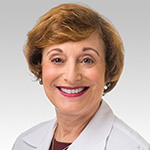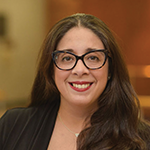- Incorporating DEI objectives into the new ACR strategic plan that will launch in 2023;
- Incorporating DEI objectives into Rheumatology Research Foundation efforts, such as grant and award reviews;
- Developing DEI education programs for ACR Convergence; and
- Developing career networking resources and opportunities for ACR/ARP members who belong to underrepresented minority groups.
Diverse Recruitment
“The Board of Directors determined that we need a more diverse rheumatology workforce,” says Dr. Ramsey-Goldman. “We need diverse providers, and we need to care for diverse patients in underserved regions of the country.”
Recruitment of trainees to work in rheumatology and pediatric rheumatology, specifically, is a high priority for the ACR, Dr. Blazer says. “Rheumatology is one of the least diverse fields in medicine, and part of the reason is our pipeline. Rheumatology is under-recognized among medical students, and people tend to gravitate toward professions where there are people who look like them.” There are no rheumatology fellowship programs at historically Black university medical schools in the U.S., she adds. “How do you expose these trainees to rheumatology when there are no rheumatologists on the faculty?”

Dr. Blazer
The ACR/ARP rheumatology workforce study published in 2015 highlighted gender shifts among practicing rheumatologists, with more female adult and pediatric rheumatologists than male. The study also highlighted a lack of racial and ethnic diversity among adult rheumatology providers, estimating that 75% are white, 15% Asian, 8.5% Hispanic and 0.08% African American.1
Diversifying the workforce will require long-term planning, says Dr. Blanco. “There’s a paucity of rheumatologists in general, and the situation will become dire in the next 20 years. The rheumatologists we recruit now don’t tend to be diverse. How do we make our workforce more representative of our diverse patient population?”
One option is more outreach to medical students and residents from underrepresented communities to encourage them to choose careers in rheumatology. This requires a commitment to support underrepresented minority trainees and investigators once they become rheumatologists, she notes. “We can do this through mentorship programs and funding investigators and their projects. Projects about health disparities don’t tend to get funded as much as basic and translational research, nor do underrepresented investigators get funding at the rates of other, more represented groups,” says Dr. Blanco.
Broad Efforts

Dr. Ramsey-Goldman
DEI issues affect every aspect of rheumatology, so the efforts to create positive change must extend beyond recruitment as well, says Dr. Ramsey-Goldman. The College posted a list of diversity and inclusion resources for members on its website, and ACR Convergence 2020 included a DEI town hall with an expert in unconscious bias and diversity in medical education.
“We want to improve student and trainee attendance at ACR Convergence, because we’ve seen that 26% of trainees who attend the meeting go on to a career in rheumatology,” she says.
Dr. Blanco is optimistic the ACR can build momentum through its actions. For example, supporting program directors to train fellows to have more sensitive, inclusive conversations with patients from diverse populations may foster mutual understanding, promote adherence to treatment recommendations and help improve outcomes, she says.
“How do we bring greater awareness and discussion of these issues to our membership, so we can also take better care of our patients? That’s what patient-centered care is all about: the needs of our patients. As an educator at a medical school, I think about this more and more. How can doctors contribute to a system where we have better outcomes for all of our patients?”


